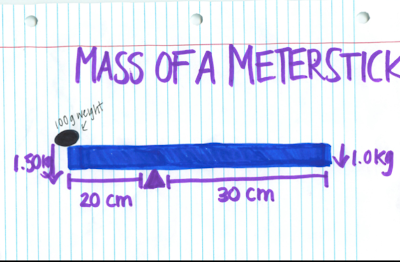This section we began by learning Circular Motion, which is comprised of tangential and rotational speed.
Tangential speed- a linear speed of something moving in a circular path
Rotational Speed- Number of Rotations on the axis of revolutions per unit of time.
With this, I learned that tangential speed is directly proportional to rotational speed. Knowing this basic information, as a class we moved on to learning about the axis of rotation. In this section we learned that the farther from, the axis of rotation you are, the faster you, must move to keep up with the rotations. A great example of this is when you roll a tapered cup across a table, the path of the cup will curve because the wider end will roll faster in order to have the same revolutions per minute as the smaller end, meaning that it will cover more distance in the same time, so its tangential speed is greater! I then learned about rotational inertia and why a wooden ball will go down a ramp faster than a hoop. The reason is that in a wooden ball, its center of mass is at the center of the ball, thus giving it a very small rotational inertia, and a large rotational velocity meaning that the wooden ball will be, much easier to begin rotating than the hoop. After learning about that, we moved on to center of mass, gravity, and torque! During this time I learned that you stretch your arms out while walking on a balance beam, because it increases the rotational inertia and gives a wider range of where your center of mass is. It also balances your torque by giving yourself a lever arm!
Torque=lever arm x force
Counterclockwise torque=clockwise torque
Now, on to Center of Gravity!
Center of Gravity- where gravity causes the force (torques are equal)
IU learned here that when you have a lower center of gravity you are more stable because your feet act as the axis of rotation.
Centrifugal Force- a force that acts on a body moving in a circular path and is directed toward the center around which the body is moving
What I found difficult:
This section, we worked with many different concepts, but the area that I thought was especially hard to understand was Centrifugal motion and Centripetal force. When we first learned about the two it was hard to differentiate the two, and I was confused about what exactly Centripetal force is. I now know that centrifugal force is an outside force, and is really the absence of a force instead of an actual force, and centripetal force is the force pulling something towards the middle. I learned this in the washer and dryer problem. The reason that clothes become dry in a washing machine is because when the water and clothes are in the machine they both have the same tangential velocity. The water is able to go through the holes on the sides of the washing machine and as a result of inertia the water will continue to move in a straight line through the holes. Friction will then act on the clothes as a centripetal force and push the clothes inward, drying the clothes! It was hard to grasp the concept of the two forces, but I was able to through practicing many problems and reading the information in my textbook
Connections to the real world:
I really connected my street smarts with physics when we learned about how tangential and rotational velocity affect the train tracks, which was able for me to connect to very easily. I learned why train wheels are built. The reason is, that when a train travels down a track it stays on the track because the wheels correct themselves due to the taper in the wheel because the larger end is on the inside of the tracks and must move tangential faster than the outside to keep up with the rotational speed, and in doing so makes tiny corrections within the tracks to keep the train stable.
I also learned in centrifugal force about the movement people make in cars, which is very relatable to me! I learned that the centrifugal force does not push you against the car, but the reason that you hit the side of the car is because no force is acting upon you. When the car is turning you continue in a straight path as a result of inertia. The car door then hits you and forces you towards the center of the circle the car were making. Now I know what happens when cars move!
Problem Solving Skills:
This section was not so much of a problem, solving section, as it was a critical thinking section. Centrifugal force and center of gravity required you to think about the world around you, with out as much math as critical thinking. Thus section was very advantageous to me though because I feel as though I know much more about daily life instances like why gymnasts are often shorter, which is because their center of gravity is lower, making their center of mass wider than that of a tall person. I also found the centripetal force useful to know. Next time I am, riding in a car and we round a turn I will know that the car is actually hitting me in order to push me towards the center of the circle the car is trying to make! I have realized over thus past semester in physics that science is all around us!


